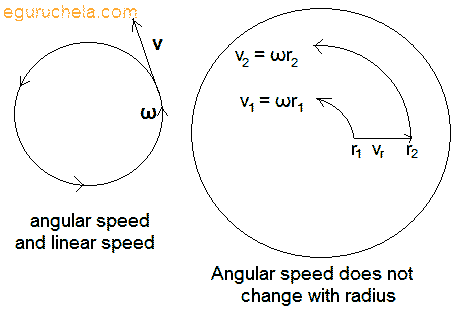Circular motion
Till 1666, Newton had formulated the initial versions of his three laws of motion. He discovered the law describing the centrifugal force (force away from the center) of a body moving uniformly in a circular path
It can be describe as the motion of the object in a circle at a constant speed As an object moves in a circle, it is constantly changing its direction the object is moving tangent to the circle.
Since the direction of the velocity vector is the same as the direction of the object's motion, the velocity vector is directed tangent to the circle as well.
Circular motion is a movement of an object along the circumference of a circle or rotation along a circular path. It can be uniform, with constant angular rate of rotation and constant speed, or non-uniform with a changing rate of rotation.
Uniform circular motion describes the motion of a body traversing a circular path at constant speed.
its distance from the axis of rotation remains constant at all times. Though the body's speed is constant, its velocity is not constant: velocity, a vector quantity, depends on both the body's speed and its direction of travel

Formula (Angular velocity)
For motion in a circle of radius r, the circumference of the circle is C = 2πr. If the period for one rotation is T, the angular rate of rotation, also known as angular velocity, ω is:
ω = 2π/T = d
Formula (Speed of the object in circular motion)
speed of the object traveling the circle is:
v = (2πr)/T = ωr
Examples of circular motion
1. Satellite orbiting the Earth at a constant height.
2. The fan-blades are rotating around a hub.
3. The stone that is tied to a rope and rolled in a circle
4. Running on a circular track
5. Planets revolving around the sun
Principles of circular motion
1. For circular motion centripetal force is required.
2. The greater the centripetal force, the faster the object will move in a circle of a given size.
3. At a given speed, the greater the centripetal force, the smaller the circle.
4. Angular speed does not change with radius
Difference between circular motion and rotational
In the case of circular motion object just moves in a circle. e.g, a satellites going around Earth at a constant height.
In the case of rotational motion object rotates on their axis. e.g, earth rotating on its own axis.
Difference between speed and velocity
Speed is the time rate at which an object is moving along a path whereas velocity is the rate and direction of motion of an object.
